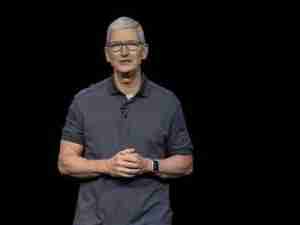By Peter A. Buxbaum, AJOT
A turnaround in the Dominican economy and the establishment of free trade between the Dominican Republic and the United States bodes well for the DR's future. That was the message delivered by Dominican president Leonel Fernandez to a gathering sponsored by the US Chamber of Commerce in Washington September 12.
"DR-CAFTA passed the Dominican Congress last week and it has been signed by me," Fernandez proclaimed. "DR-CAFTA will form the impetus for the transformation of the Dominican and Latin American economies."
One immediate effect of the implementation of DR-CAFTA, according to Fernandez, is that the DR and the U.S. will enjoy a reciprocal trade arrangement. "The Dominican Republic has been exporting to the U.S. under the trade preferences of the Caribbean Basin Initiative," Fernandez said. "DR-CAFTA means that trade can be done reciprocally."
Fernandez also noted that in recent years, DR exports had been losing market share in the United States to China. "DR-CAFTA represents a breakthrough for the Dominican Republic and Central America," Fernandez claimed.
The DR has long been committed to international free trade, "the ultimate growth engine," in Fernandez's words. "As a member of the World Trade Organization since its founding, the Dominican Republic is committed to the free trade dialogue and seeks to lower barriers wherever possible," he said. "Our agreements with North America, Central America, the Caribbean Community, and the European Union, give the DR preferential access to a total of 790 million consumers worldwide."
Services and manufactured goods predominate
The Dominican economy has shifted markedly in recent decades, Fernandez noted, from an economy reliant on exporting traditional agricultural commodities to a more modern economy, in which services and manufactured goods predominate. In the 1970s, 85% of the DR's exports came from sugar, tobacco, cocoa, and coffee, according to Fernandez. Today, they account for less than three percent.
Fernandez's program includes three pillars for building a modern DR economy: manufacturing and assembly in free trade zones, tourism, and remittances from Dominicans abroad. The DR has had to rebuild after its "thriving tourism and manufacturing industries suffered the blows of post-9/11 economic decline," he said. A banking scandal added to the DR's economic woes by undermining investor confidence.
"GDP growth rates of as high as eight percent a year at the end of the millennium dropped into the negative numbers in 2003," Fernandez said. "Inflation reached an average of about thirty-five percent, causing prices for basic goods to soar in 2003 and 2004. Public sector debt climbed to nearly half of our National Product totaling almost seven billion dollars. We went from serving as a global model of economic development to struggling to keep our heads above water."
However, Fernandez said that the DR's economic tide is turning. GDP growth in the first quarter of 2005 was 5.8%, he said, while end-of-year 2005 five growth will likely reach over six percent.
"Our national objective is, first and foremost, to restore our backbone of macroeconomic stability," Fernandez said. "In 2003, about twenty percent of our Gross National Product was lost due to our poor economic performance and banking failures. Lack of necessary regulatory supervision, management skills and corruption caused our people to suffer from one of the worst economic crises and a severe loss of international credibility. We're proving our commitment to this stance through action, by establishing credible monetary and fiscal policies."
The support of the International Monetary Fund is aiding in this process with a $600 million dollar standby agreement. In order to induce the IMF to continue its arrangement with the DR, (following a suspension due to excessive public spending,) the government has initiated new regulatory measures to renew confidence in the banking







